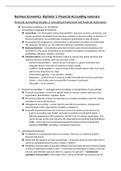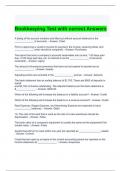Samenvatting
Summary Financial Accounting: Business Economics BA1- VUB
- Instelling
- Vrije Universiteit Brussel (VUB)
This is a summary of the financial accounting course in the first bachelor Business Economics at the VUB. I got 18/20 with this summary.
[Meer zien]





